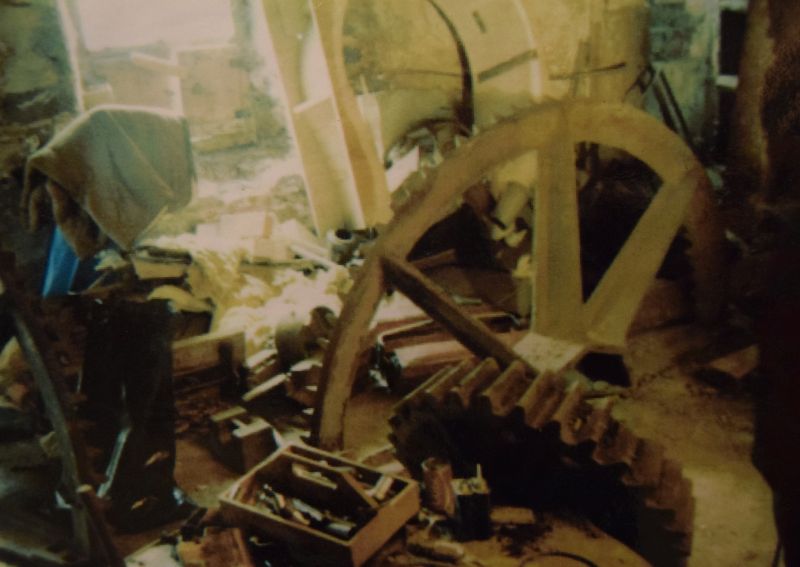Dalgarven Mill was requisitioned by the government in World War II and when handed back, the millers removed the Victorian machinery and installed modern machines for making provender or cattle food. When the restoration began, it was not our intention to restore the Mill, but simply to use the space for exhibitions. However, fate intervened with the opportunity to rescue the contents of Lindean Mill at Galashiels and re-erect them here. So with John Ridley, the miller from Blair Atholl, and several young friends, we removed twelve tons of cast iron gearing and four lorry loads of timber machinery, and informed an astonished workforce that they would be required to rebuild them here.

Machinery from Lindean Mill: the big question was how to get all this heavy gearing out with no mechanical aid.
Brute force and ignorance proved to be the answer.


The miller from Blair Atholl, John Ridley, glass blower, Simon, and Gavin sporting his fashionable perm!
The heavy and dangerous work continued, much helped by the skills and equipment of a passing blacksmith.

Some of the gang and one of the lorry loads of the original timber machinery ready for the road. (Miller’s house at Lindean Mill)

The original stone box, hopper, damsel and frame re-erected at Dalgarven. The joiners would require to make three replicas for use in the Mill.

Twelve tons of cast iron gearing finally delivered to Dalgarven. What we didn’t realise was that it would be even more difficult to
re-erect than it had been to take down.
Because we were persuaded that it would be a good idea to make flour and oatmeal as was done at Blair Atholl Mill, we spent a great deal of time and money meeting the requirements of environmental health.
One disappointment was that when push came to shove the owner at Lindean decided that he wanted to keep the millstones.
Eventually, we persuaded him to let us have the top runner stones while the lower ones were left embedded in the floor of what
was to be his showroom. This meant that we had three of the six stones we needed, and so began the great millstone hunt!
Eventually we got three from Blair Mill nearby, two from Dumfriesshire, and six more from the about-to-be-demolished mill
in Fenwick. So if you wander around the site, apart from the six in situ in the Mill you will find two spares in the ground floor room,
two monolithics ie in one piece, at the right handside of the entrance, and another of the above cunningly disguised as a seat/picnic
table near the wheel.





